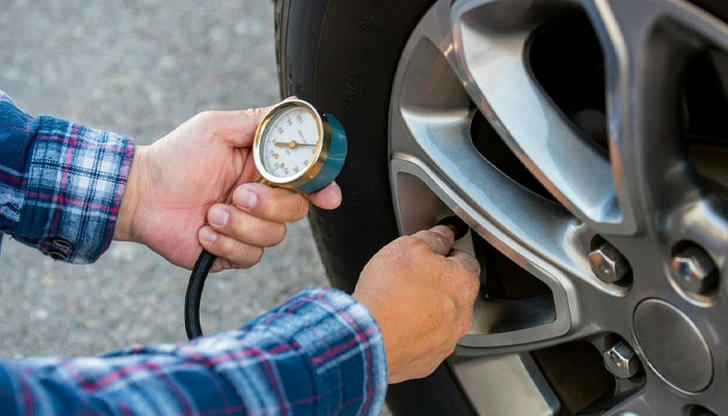Car Maintenance Made Easy for Seniors: No-Stress Vehicles, Simple Schedules, and DIY Tips

As we get older, convenience and peace of mind become priorities-especially when it comes to our cars. The last thing anyone wants is to be stranded with engine trouble or stuck with an unexpected repair bill. For older drivers, keeping a car in good shape shouldn't feel like a full-time job. That's why we've created this simple guide: to help you choose a low-maintenance vehicle, follow an easy maintenance schedule, and even handle a few basic DIY tasks yourself- no mechanic degree required.
Low-Maintenance Vehicles Perfect for Older Drivers

Not all cars are created equal when it comes to reliability and maintenance needs. Some vehicles just keep running with minimal fuss. If you're looking to buy (or downsize), here are a few models known for long lifespans, low repair costs, and easy upkeep:
✅Toyota Corolla
Often topping reliability rankings, the Corolla is a no-nonsense sedan with an outstanding track record. Parts are affordable, and major repairs are rare. Great for daily errands or short trips.
✅Honda CR-V
This compact SUV offers the perfect balance of comfort, storage, and fuel efficiency. It's also among the most dependable vehicles on the market, with minimal issues even after 100,000+ miles.
✅Subaru Forester
If you live in a region with snow or rough roads, the Forester's all-wheel drive is a bonus. It's easy to drive, easy to maintain, and built to last well into retirement.
✅Hyundai Elantra
Modern Elantras are reliable and come with generous warranties (up to 10 years), meaning you'll have fewer out-of-pocket repairs. The newer models are tech-friendly without being overwhelming.
Pro Tip: Avoid vehicles with turbocharged engines or complex infotainment systems unless you're comfortable with technology. Simpler is often better-and more affordable.
The No-Nonsense Car Maintenance Schedule (Just the Essentials)

You don't need to memorize your owner's manual or visit the dealership every few months. Here's a simplified maintenance timeline that keeps your car healthy-and keeps mechanics honest.
Every 3 Months or 3,000-5,000 Miles
• Check engine oil and get an oil change if needed
• Top off fluids: coolant, brake, windshield washer
• Check tire pressure and tread condition
Every 6 Months
• Rotate tires to ensure even wear
• Inspect the battery and clean terminals if necessary
• Replace windshield wiper blades (if streaking or skipping)
Every 12 Months
• Inspect belts and hoses for cracks
Every 2-3 Years
• Replace the battery (especially if it's slow to start)
• Flush and replace brake fluid
• Inspect the suspension system
Watch Out For: Some mechanics push unnecessary services (transmission flushes, fuel additives, etc.). If your car is running fine and hasn't hit a major mileage milestone (like 100,000 miles), these extras are rarely urgent.
Simple DIY Maintenance You Can Do at Home

You don't need to be a gearhead to take care of your car. Here are a few tasks that are both safe and easy- and can save you a trip to the shop.
Change Wiper Blades
Time: 5-10 minutes
Cost: ~$15-$30
No tools needed. Most blades click on and off easily. Instructions usually come with the blades- or you can watch a 2-minute YouTube video.
Check and Inflate Tires
Time: 10 minutes
Tools: Digital tire pressure gauge (~$10), air pump (many gas stations have them)
Keeping your tires properly inflated improves gas mileage and safety. Check monthly.
Check Battery Health
Use a battery tester or stop by your local auto parts store- most will check it for free.
Keep battery terminals clean using a simple brush and baking soda solution. Corrosion can prevent the car from starting.
Replace Cabin Air Filter
Time: 10-15 minutes
Cost: ~$20
Often located behind the glove box. No tools or mechanic required. Replacing it improves airflow and reduces allergens in the car.
Final Thoughts: Keep It Simple, Keep It Reliable

You don't need to be a car expert to stay on top of maintenance. By choosing a vehicle that's known for reliability, following a simple care routine, and handling a few small tasks yourself, you can reduce your stress and keep your independence on the road. No upsells, no surprise breakdowns, and no confusing tech.
And remember- regular maintenance isn't about "babying" your car. It's about making sure it's there for you, every time you need it. Whether it's a trip to the grocery store or a scenic drive on the weekend, your car should work for you- not the other way around.
